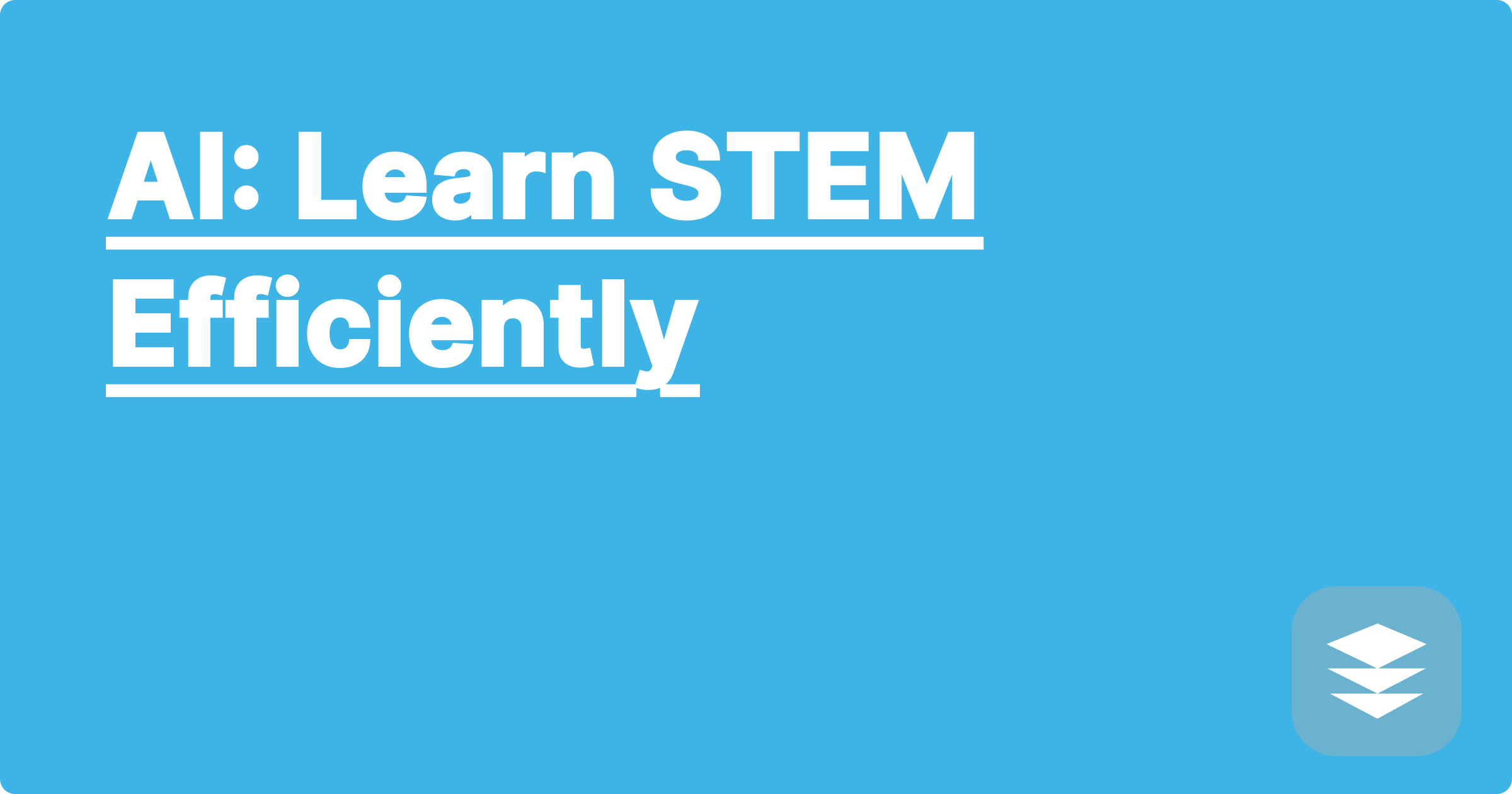
The ever-expanding landscape of STEM fields presents a formidable challenge for students and researchers alike. The sheer volume of information, complex concepts, and the need for continuous learning can feel overwhelming. Artificial intelligence (AI) offers a powerful set of tools to navigate this complexity and enhance learning efficiency, providing a much-needed advantage in the competitive world of STEM. This shift towards AI-powered learning is not just a trend; it represents a fundamental change in how we approach education and research.
For STEM students, AI can personalize the learning experience, offering tailored support and resources. Researchers can leverage AI to accelerate literature reviews, analyze complex datasets, and even generate novel hypotheses. This empowers both students and researchers to focus on higher-level thinking, critical analysis, and innovative problem-solving, ultimately leading to greater success in their respective fields. Embracing these AI tools is no longer optional; it is becoming essential for anyone seeking to thrive in the rapidly evolving world of STEM.
STEM education and research often involve grappling with intricate theories, vast datasets, and complex problem-solving. Students struggle with understanding foundational concepts, managing their time effectively, and applying theoretical knowledge to practical problems. Researchers face challenges in staying up-to-date with the latest literature, efficiently analyzing large datasets, and formulating innovative research questions. The traditional methods of learning and research, often relying on linear progression and manual information processing, are becoming increasingly inadequate in the face of this complexity. This creates a need for more efficient and personalized learning and research methodologies. The sheer volume of information available can be overwhelming, making it difficult to identify the most relevant resources and extract meaningful insights. This information overload can hinder progress and lead to frustration, highlighting the urgent need for more effective tools and strategies.
AI tools like ChatGPT, Claude, and Wolfram Alpha offer a transformative approach to STEM learning and research. ChatGPT and Claude can be used to explain complex concepts in simpler terms, generate practice problems, and even provide personalized feedback on student work. These language models can act as virtual tutors, offering on-demand support and clarifying difficult topics. Wolfram Alpha excels in computational tasks, allowing users to solve complex equations, visualize data, and explore mathematical concepts interactively. By combining the strengths of these different AI tools, students and researchers can create a personalized learning and research environment that caters to their individual needs and goals. This personalized approach can significantly enhance understanding and accelerate the learning process.
To begin utilizing these AI tools, start by identifying a specific problem or concept you want to explore. Then, formulate a clear and concise query for the chosen AI tool. For example, if you're struggling with a particular physics concept, you could ask ChatGPT to explain it in simpler terms or provide relevant examples. If you need to solve a complex integral, Wolfram Alpha can provide the solution and even show the steps involved. After receiving the AI's response, carefully analyze the information provided. It's crucial to critically evaluate the output and ensure its accuracy and relevance to your specific needs. Don't hesitate to refine your queries or ask follow-up questions to delve deeper into the topic. This iterative process of querying, analyzing, and refining allows you to extract the most valuable insights and build a deeper understanding of the subject matter.
Consider a student struggling with understanding the concept of derivatives in calculus. They could ask ChatGPT, "Explain derivatives in simple terms with real-world examples." ChatGPT might respond with an explanation relating derivatives to the instantaneous rate of change and provide examples like the velocity of a car or the growth rate of a population. For a researcher analyzing a large dataset on climate change, Wolfram Alpha could be used to perform statistical analysis, identify trends, and visualize the data in meaningful ways. For instance, inputting temperature data from the past 50 years could reveal trends in global warming and allow for predictions about future temperature changes. Another example involves using ChatGPT to generate practice problems for a specific topic, like chemical equilibrium. The AI can create a variety of problems, allowing students to test their understanding and identify areas where they need further study.
Integrating AI tools into your STEM workflow requires a strategic approach. Start by identifying the specific areas where AI can be most beneficial, whether it's understanding complex concepts, managing information overload, or accelerating research tasks. Develop clear and concise queries to get the most relevant and accurate information from the AI. Always critically evaluate the AI's output, ensuring its accuracy and relevance to your specific needs. Don't rely solely on AI; use it as a supplement to traditional learning and research methods. Combine the power of AI with textbooks, lectures, and discussions with peers to create a comprehensive learning experience. By strategically integrating AI into your workflow, you can significantly enhance your learning efficiency and research productivity.
To conclude, AI tools offer a powerful new approach to STEM learning and research. By leveraging the capabilities of AI, students and researchers can overcome the challenges of information overload, complex concepts, and time constraints. Embracing these tools requires a proactive and strategic approach, focusing on clear query formulation, critical evaluation of AI output, and integration with traditional learning methods. Start exploring these AI tools today and unlock your full potential in the exciting world of STEM. Experiment with different platforms and find the tools that best suit your individual learning style and research needs. The future of STEM learning is here, and it's powered by AI.